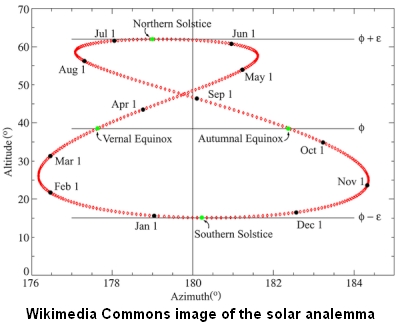¡SkyCaramba! Weekly astronomy blog for the week ending December 27, 2014
These are the longest days of the year. If you live in the northern hemisphere, you may not think so. If you live in the southern hemisphere, you might agree with me although we’re probably not talking about the same thing. It depends what we each mean by day.
Whichever hemisphere is tilted away from the sun gets less daylight. The farther you are from the center of the circle of sunlight shining on the earth, the less of it you go through. So in December, far northern locations like Alaska and Finland may have only four or five hours between sunrise and sunset. Some places are so far north, they don’t go through the sunlight circle at all for weeks.
Meanwhile, places very far south like the Falkland Islands go through so much of the sunlight circle in December, they have nearly 18 hours between sunrise and sunset. Most of Antarctica is far enough south it stays in the sun around the clock. So that’s one way of describing how long or short the day is.
Another way is to measure how much time passes between the sun being at the highest point in the sky on two successive occasions. That point is called high noon or local noon. The time is takes to go from local noon to local noon is called the solar day. The solar day averages 24 hours long and is the basis for our 24-hour time system. That’s right, it averages 24 hours and isn’t exactly 24 hours every day.
Around February 10, May 16, July 27, and November 5, the true solar day is exactly 24 hours. But around March 25, the sun takes about 20 seconds less to go from high noon to high noon. Around December 20, it takes about 30 seconds longer than 24 hours to do it. It’s true that Earth’s rotation speeds up and slows down, but not nearly enough to account for a daily shift of 20 to 30 seconds. And the Earth’s rotation speed doesn’t change regularly enough to mark it on a calendar.
What’s happening here is an effect of the Earth’s orbital speed changing. It’s still taking almost exactly the same amount of time for the earth to rotate once on any day of the year. But when the planet is closer to the sun, it’s moving through space faster. When Earth is farther from the sun, it’s moving through space slower. As the planet’s orbital speed changes, it may take a little more or a little less time for the sun to get to the same high point. This can be marked on a diagram called an analemma.
You have probably seen an analemma on some globes. It looks like a distorted figure eight and has months and dates marked around it. You have probably also seen composite pictures of the sun and its place in the sky at the same time on several different days throughout the year. The sun’s positions form a figure eight also.
Several seconds every day adds up. In some almanacs, a number representing sun fast or sun slow is used to say how many minutes the sun will appear to be ahead of or behind a 24-hour clock. However, that number usually can’t be used by itself to adjust sundial time. The user must also know how far east or west he or she is from the time zone meridian. That may require an adjustment of a few minutes. Summer time shifts add a full hour.
Well, now you know, even if it isn’t so obvious, these are the longest days of the year. SkyCaramba!
http://scienceblogs.com/startswithabang/2009/08/26/why-our-analemma-looks-like-a/
http://www.analemma.com/pages/framespage.html
http://www.universetoday.com/14700/how-long-is-a-day-on-earth/
